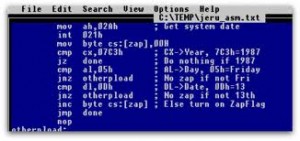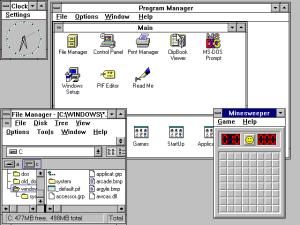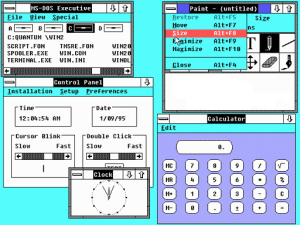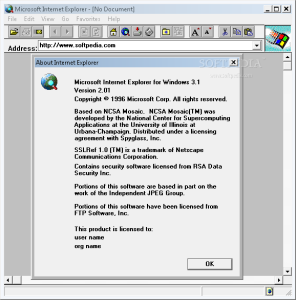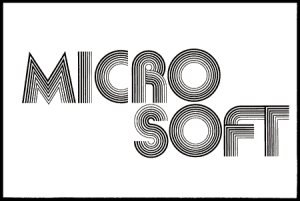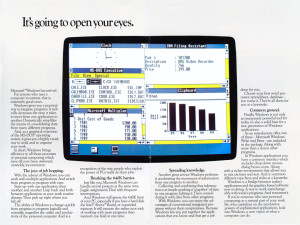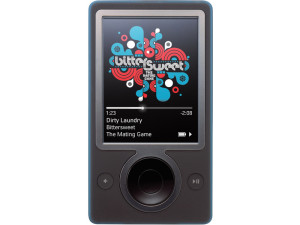Microsoft
Genesis of “Vaporware”

The term “vaporware” is first used by Philip Elmer-DeWitt in a TIME magazine article. The term is now commonly used to describe software that has been long announced but hasn’t actually been released. At the time, many experts believed Microsoft was guilty of using vaporware announcements to keep customers from purchasing software from other companies (by convincing them that a Microsoft version was just around the corner).
Bill Gates Steps Aside
Microsoft chairman Bill Gates steps aside as chief executive and promotes company president Steve Ballmer to the position. Gates would stay on as “chief software architect” until June of 2008 before finally giving up day-to-day responsibilities at Microsoft. Gates is still Microsoft’s chairman of the board.
Friday the 13th Virus Gets Brits
The “Friday the 13th” virus strikes hundreds of IBM computers in Britain. This is one of the most famous early examples of a computer virus making headlines. Over twenty years later, while other companies have systems that are practically immune to virues, Microsoft still hasn’t been able to develop a solution to prevent viruses from infecting their systems.
Zune 2K Day
Playfully nicknamed “Zune 2K” day after Y2K day, owners of Microsoft Zune devices began reporting that their devices had malfunctioned and refused to boot up. The problem turned out to be a “a bug in the internal clock driver related to the way the device handles a leap year,” as described by Microsoft. The problem would fix itself on Jan 1, 2009 if users let the battery run down and then reset the device on that day. Certainly, the publicity from this gaffe couldn’t have helped the perception of the Zune in the marketplace, as by this time Apple’s iPhone had started its dominant rise. Microsoft said it would issue a bugfix for the device so that this problem wouldn’t re-occur in 2012, but by that time, Microsoft had already killed the Zune line of devices so I’m not sure if the problem was ever actually fixed.
Microsoft Releases Windows 3.11
Microsoft releases version 3.11 of Windows, a minor upgrade to Windows 3.1. It became the last stable version of Windows before Windows 95 was released in August of 1995.
Windows 2.0 Released
Microsoft releases version 2.0 of Windows. The most notable feature of Windows 2.0 was that application windows could overlap each other, unlike in Windows 1.0. The terminology of “Minimize” and “Maximize” was also introduced in Windows 2.0.
Windows 2.0 was a relatively obscure operating system, as the popularity of Windows did not really take off until version 3 in the 1990’s. Interestingly, Microsoft officially supported Windows 2.0 until December 31, 2001, a span of 14 years.
All that being said, Windows 2.0 is probably more important in computer history for being the version of Windows that prompted Apple’s famous lawsuit against Microsoft for copyright infringement of the Macintosh operating system.
Microsoft Ships Internet Explorer 2.0
Nearly 6 months to the day after Bill Gates sent his Internet Tidal Wave memo recognizing the importance of the Internet, and only 3 months after releasing version 1.0, Microsoft releases Internet Explorer 2.0 for Windows 95 and Windows NT 3.5. IE 2.0 was still based on licensed code from Spyglass Mosaic, but was the first IE version to support now-common features such as SSL, JavaScript, and cookies. It was also the first version to allow the importing of bookmarks from Netscape Navigator, which at the time had a virtual monopoly on the web browser market. This was the first inklings of the “browser war” that was soon to erupt over the next few years.
Microsoft Trademarked
November 26, 1976
Bill Gates and Paul Allen register the trade name “Microsoft” with the Office of the Secretary of State of New Mexico. Previously, Gates and Allen had been working under an informal partnership known as “Micro-soft”, a combination of Microcomputer and Software. The partnership continued for several more years until Microsoft incorporated in July of 1981, just prior to the introduction of the IBM PC.
Windows 1.0 Ships
Two years after initially being announced, Microsoft finally ships the first version of Windows. Originally slated to be shipped in April of 1984, the long delay caused skeptics to began to accuse Windows of being “vaporware”. Due to the relatively high demands of then-current PC technology, Windows 1.0 was generally considered too slow to be usable. It wasn’t until Windows 3 that the operating system began to generate significant sales.
Microsoft Introduces Zune
Knock-knock
Who’s there?
Microsoft Zune.
Microsoft Zune who?
Exactly.
Microsoft releases their Zune media player, intended to compete with Apple’s iPod. Hailed by some as an “iPod-killer”, the only killing done was by Microsoft less than 5 years later when they ended production of the Zune brand. Otherwise known as simply another media player to fall to the iPod behemoth, the Zune is considered a spectacular failure when taking into account the weight of the Microsoft brand at the time. The Zune’s lack of success foreshadowed of the decline of Microsoft in The New World of Technology, once Apple introduced the iPhone and iPad effectively ending the PC Era.


